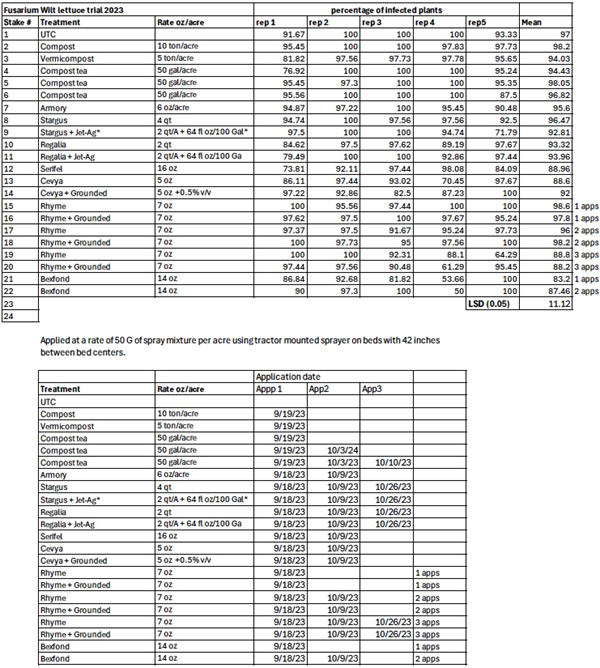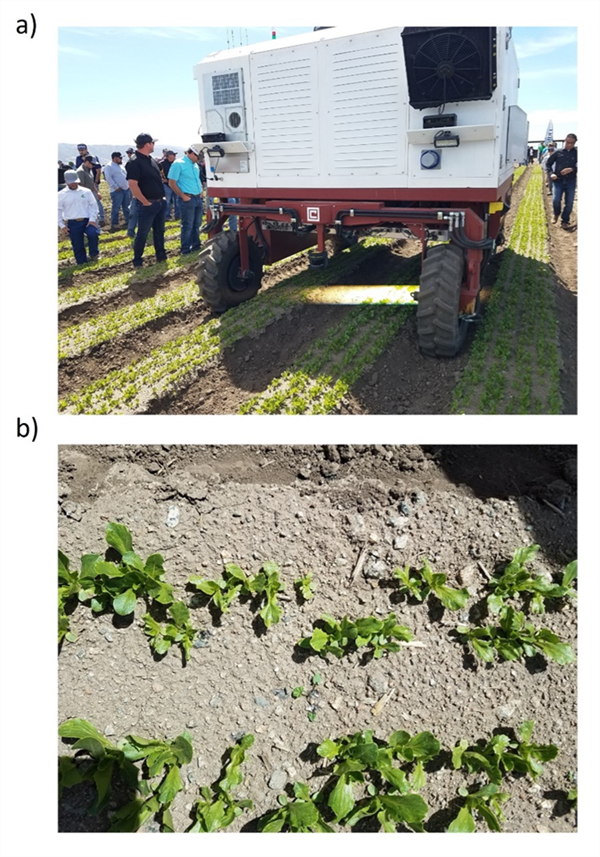Dec 1, 2017
Review of Pest Pressure on Fall Produce and Melon Crops – 2017
It seems at the end of every fall, I make the same comment “insect pressure this season was the most unusual and unexpected I’ve experienced in a long while”. That’s probably because I have a short memory. But, a quick look at both recent and historic data on pest abundance recorded from our University of Arizona research plots and areawide sampling/trapping suggests that insect pressure this fall was historically low for some pests, while unusually heavy for other pests compared with previous years. (see
Pest Abundance on Desert Produce and Melon Cops in 2017)
Whitefly/CYSDV: Areawide, whiteflies in fall melons were at the lowest levels we’ve measured over the past 11 years. Accordingly, CYSDV incidence at harvest in cantaloupe fields was the lowest we’ve seen since the virus first showed up in 2007. The virus incidence in over 32 melon planting was very low in most fields, but a few hot spots were observed in Roll and Wellton in fields adjacent to cotton and alfalfa. For the most part, whiteflies were similarly light in produce crops with an occasional flare-up in some isolated areas.
Beet armyworm, cabbage looper and corn earworm: Pretty average worm year in Yuma. Population abundance on untreated lettuce at the YAC this fall was lower than last year, but higher than 2015. Activity appeared to slow down dramatically in early November, even with the warm nighttime lows we experienced. Anticipated more activity in to December. Corn earworm was very light.
Bagrada bug: The pest was almost non-existent this year. For a third year, they were so light in my research plots that we were not able to conduct any efficacy trials. Bagrada abundance in the past two falls has been the lowest we’ve observed since the invasive stink bug first showed up in 2010. Similar trends have occurred in California, and we’re not sure why?
Thrips: The western flower thrips pressure this fall was heavy, but the pest was not as abundant as last fall. Our fall trials showed that they averaged over 40 / plant in the non-treated checks, which translates into significant damage to lettuce if not controlled. Similarly, bean thrips showed again in October, but were only about half as abundant as they were in 2016. Nonetheless these numbers cause significant scarring to seedling plants.
Flea beetles: Beetle activity at YAC was considerably lower than last what we experienced last fall. In fact, we had difficulty getting any decent flea beetle studies conducted. However, had reports of sustained flea beetle movement onto lettuce (with significant feeding damage) from alfalfa and other sources earlier in the fall.
Diamondback moth (DBM): Well DBM was obviously not a problem for local desert growers in 2017. Did not receive a single report of difficulty in controlling populations. Verimark Tray drenches performed well, as did conventional chemistries (including Coragen, pyrethroids and Lannate). Research showed that transplants were very clean this year, whereas migratory populations of DBM accounted for most of the in-field populations. This was consistent with areawide Pheromone trapping that showed DBM trap captures began following storms that occurred in early September. At YAC, the DBM larval population on direct-seed broccoli was 2-3 times higher than we’ve previously recorded; a result of migration. Larval number still remain moderate (6 larvae/ 10 plants) in early December. Remember: DBM is usually a spring pest in the desert, so keep your eyes open for larvae and damage on those late cole crops and seed crops.
In response to the recent outbreaks of Diamondback moth (DBM) , Plutella xylostella in Yuma, we have established a pheromone trap network designed to monitor the activity and movement of adult populations of DBM. PCAs have had difficulty controlling DBM in cabbage, broccoli and cauliflower since October. Traps have been placed in Roll, Wellton, Dome Valley, Gila Valley and Yuma Valley in locations where cole crops are presently being grown or in areas where infestations were known to occur this fall.
To contact John Palumbo go to:
jpalumbo@ag.Arizona.edu
 In response to the recent outbreaks of Diamondback moth (DBM) , Plutella xylostella in Yuma, we have established a pheromone trap network designed to monitor the activity and movement of adult populations of DBM. PCAs have had difficulty controlling DBM in cabbage, broccoli and cauliflower since October. Traps have been placed in Roll, Wellton, Dome Valley, Gila Valley and Yuma Valley in locations where cole crops are presently being grown or in areas where infestations were known to occur this fall.
In response to the recent outbreaks of Diamondback moth (DBM) , Plutella xylostella in Yuma, we have established a pheromone trap network designed to monitor the activity and movement of adult populations of DBM. PCAs have had difficulty controlling DBM in cabbage, broccoli and cauliflower since October. Traps have been placed in Roll, Wellton, Dome Valley, Gila Valley and Yuma Valley in locations where cole crops are presently being grown or in areas where infestations were known to occur this fall. To contact John Palumbo go to: jpalumbo@ag.Arizona.edu
To contact John Palumbo go to: jpalumbo@ag.Arizona.edu









